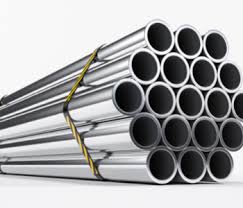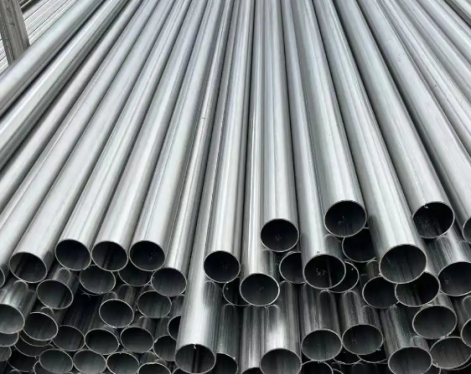Electric Fusion Welding (EFW) and Electric Resistance Welding (ERW) are two common metal welding methods. They are all methods of using electrical energy to heat metal materials to their melting point, causing them to melt and join together. Let’s take a closer look at these two welding methods.
Electrofusion welding is a method that uses an arc or electric current to heat metal materials to their melting point, causing them to melt and join together. Electrofusion welding can be divided into various types such as gas shielded arc welding, manual arc welding, submerged arc welding, and plasma welding. Among them, gas shielded arc welding is the most common electrofusion welding method. In gas shielded arc welding, the welding area is shielded in an inert gas to prevent oxidation and other contaminants. This welding method is suitable for welding different kinds of metals, such as steel, aluminum, copper, etc.

Resistance welding is a method that uses electric current to pass through metal materials, generating heat to heat them to their melting point, causing them to melt and join together. Resistance welding can be divided into many types such as spot welding, seam welding, and tin welding. Among them, spot welding is the most common resistance welding method. In spot welding, two pieces of metal are clamped together and then heated by an electric current, causing them to melt and join together. This welding method is suitable for welding thin sheet metal, such as body welding in automobile manufacturing. ERW pipe is a steel pipe made by resistance welding.
Electrofusion welding and resistance welding each have their own advantages and disadvantages.
Advantages of electrofusion welding
1. High welding strength
Since electrofusion welding uses high temperature to melt materials and connect them through solidification, the welding strength is high and the welded parts have good compactness and toughness.
2. Wide application range
Electrofusion welding can be used to weld various metal materials, and the appropriate power source and electrode can be selected for welding according to the actual situation.
3. Can weld thick plates
Disadvantages of electrofusion welding
1. It requires the use of equipment with certain high temperature and high pressure capabilities.
2. Professional welding technology and exquisite welding technology are required
3. Strict environmental hygiene requirements
Advantages of resistance welding:
1. Simple and easy to use
2. No external heating source required
3. High production efficiency, suitable for mass production welding
Disadvantages of resistance welding:
1. Welding strength is relatively low
2. Welding thickness restrictions
3. Sensitive to material properties
Electrofusion welding and resistance welding are two common metal welding methods. When selecting a welding method, it is necessary to choose the appropriate method according to the specific situation to ensure welding quality and efficiency.
Electrofusion welding is a method that uses an arc or electric current to heat metal materials to their melting point, causing them to melt and join together. Electrofusion welding can be divided into various types such as gas shielded arc welding, manual arc welding, submerged arc welding, and plasma welding. Among them, gas shielded arc welding is the most common electrofusion welding method. In gas shielded arc welding, the welding area is shielded in an inert gas to prevent oxidation and other contaminants. This welding method is suitable for welding different kinds of metals, such as steel, aluminum, copper, etc.

Resistance welding is a method that uses electric current to pass through metal materials, generating heat to heat them to their melting point, causing them to melt and join together. Resistance welding can be divided into many types such as spot welding, seam welding, and tin welding. Among them, spot welding is the most common resistance welding method. In spot welding, two pieces of metal are clamped together and then heated by an electric current, causing them to melt and join together. This welding method is suitable for welding thin sheet metal, such as body welding in automobile manufacturing. ERW pipe is a steel pipe made by resistance welding.
Electrofusion welding and resistance welding each have their own advantages and disadvantages.
Advantages of electrofusion welding
1. High welding strength
Since electrofusion welding uses high temperature to melt materials and connect them through solidification, the welding strength is high and the welded parts have good compactness and toughness.
2. Wide application range
Electrofusion welding can be used to weld various metal materials, and the appropriate power source and electrode can be selected for welding according to the actual situation.
3. Can weld thick plates
Disadvantages of electrofusion welding
1. It requires the use of equipment with certain high temperature and high pressure capabilities.
2. Professional welding technology and exquisite welding technology are required
3. Strict environmental hygiene requirements
Advantages of resistance welding:
1. Simple and easy to use
2. No external heating source required
3. High production efficiency, suitable for mass production welding
Disadvantages of resistance welding:
1. Welding strength is relatively low
2. Welding thickness restrictions
3. Sensitive to material properties
Electrofusion welding and resistance welding are two common metal welding methods. When selecting a welding method, it is necessary to choose the appropriate method according to the specific situation to ensure welding quality and efficiency.









